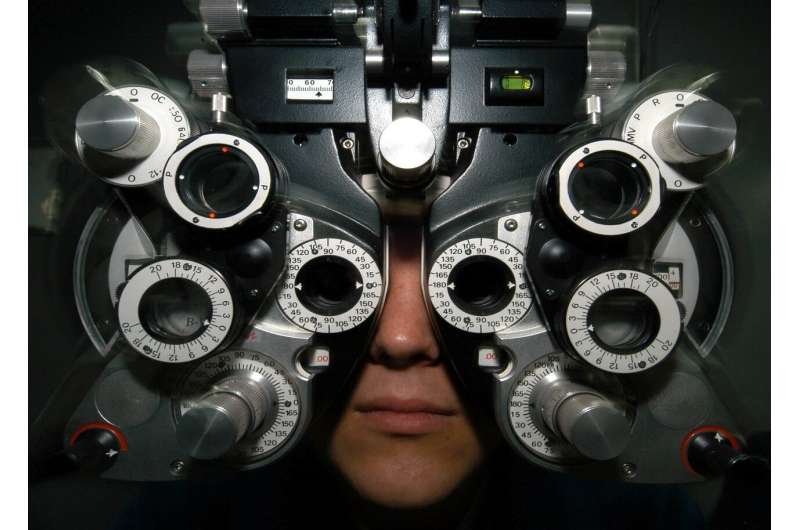Neuroplasticity: Why is the visual cortex involved in language processing in blind individuals?

People who are blind use part of their visual cortex for language and semantic processing. The visual cortex is the paradigm case of a "modality-specific" brain region, being devoted exclusively to visual perceptual processes in healthy and undeprived sighted individuals. Why should it shift its function in the blind toward higher cognition, in particular language and meaning? Researchers from the Brain Language Laboratory of the Freie Universität Berlin were able to demonstrate, using computer simulations of large-scale brain systems, how a set of biological mechanisms acting within specific neuroanatomical structures are sufficient to provide a direct and straightforward explanation for the cortical reorganization of language caused by visual deprivation. The findings were published in a recent issue of the journal Scientific Reports.
Compared with sighted individuals, blind people showed relatively stronger activation of the primary visual area (V1) in the occipital cortex, a region located towards the back of the head, during verb production and while listening to words and sentences. Why the visual system is functionally recruited for language processing and how such functional reorganization of the human brain emerges at the level of nerve cells and neuronal circuits had not been fully understood.
A biologically constrained network model implementing neurophysiological function, anatomical structure, and connectivity of large sections of the human cortex was applied to simulate word meaning acquisition by learning the semantic relationships between word forms and the objects and actions these words are typically used to speak about. Simulations were done in an "undeprived healthy" model where visual input was available and, crucially, also in a "deprived" version where the visual input was removed although other types of input persisted.
As a result of neurophysiological learning mechanisms, word-related neuronal circuits spontaneously emerged across different cortical areas, but only under visual deprivation the neural circuits grew and extended into the visual cortex for all semantic word types tested (and especially for those carrying action-related meaning). In contrast, the "undeprived" model only allowed words denoting visual entities to grow towards the visual domain. The additional neural recruitment of visual areas in the "blind model" also led to a longer-persisting spiking neural activity compared to the sighted model during word recognition processing. This explains why blind people tend to have better working memory than sighted people.
The authors argue that two biological mechanisms explain the visual cortex recruitment for language processing in the blind: So-called "Doursat-Bienenstock" expansion, that is, the natural tendency of neuronal circuits to grow based on correlation of neural activity, and the absence of uninformative perceptual input from deprived regions, which under healthy conditions is critical for preventing excessive neuronal circuit expansion.
These computer simulation results provide critical insights into how linguistic and semantic knowledge is represented in the human brain under normal and visually deprived conditions. The resultant new insights into the reorganization of visual and language mechanisms may guide researchers in developing and improving methods for the neurorehabilitation of language, perception, and higher cognition.
More information: Rosario Tomasello et al. Visual cortex recruitment during language processing in blind individuals is explained by Hebbian learning, Scientific Reports (2019). DOI: 10.1038/s41598-019-39864-1
Rosario Tomasello et al. Dataset: Language and semantic processing in blind and sighted individuals. A simulation study. DOI: 10.5281/zenodo.2551071
















